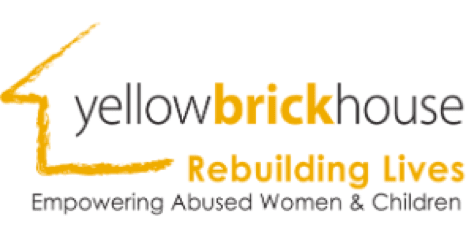Internet and Telephone Safety
Internet Safety
The websites you visit online can be traced – including the one you’re reading right now. To be safe, erase any record that you have visited the Yellow Brick House website once you have completed your search.
When you clear the cache and the history list, you erase ALL information that had been previously stored there. A way to avoid suspicion is after clearing the CACHE and HISTORY LIST spend some time visiting sites that are favourites for you or your family. This way, the cache and history list start to get filled up without alerting anyone to the fact that not only are you are erasing your tracks, but that you know how to do so.
A spouse or partner can often tell when a woman makes up her mind
to leave the abuser. Do not underestimate the danger – Always erase your tracks.
Depending on the browser you use, instructions can vary. Please click on the links below. Alternatively, consider using a public access computer at your local library, or a friend’s home, or workplace.
(Before closing the Browser)
Step 1: Click on menu “hamburger icon” top right corner
Step 2: Click on “Settings”
Step 3: Click on “Show advanced settings…”
Step 4: Click on “Clear browsing data…”
(Before closing the Browser)
Step 1: Select the Tools in the menu bar. Open the Internet Options Dialog Box and select the General Tab.
Step 2: In the Temporary Internet Files, click Delete Files. Check the “Delete all offline content” and click OK.
Step 3: In the History, click Clear History.
Step 4: In Temporary Internet Files, click Delete Cookies and then OK.
Step 5: Click OK to exit the Internet Options Dialog Box.
(Before closing the Browser)
Step 1: Select the Tools in the menu bar, then select the Options.
Step 2: Click on the “Privacy” Option, with the picture of a padlock.
Step 3: Select the “History” tab. Click on “Clear Browsing History Now”.
Step 4: Select the “Cache” tab. Click on “Clear Cache Now”.
Step 5: Click “OK” to exit the Options dialogue box.
(Before closing the Browser)
Step 1: Select the Edit in the menu bar, then select the Preference.
Step 2: Under the Category, select Navigator. Then click Clear History as well as Clear Location Bar.
Step 3: Under Privacy & Security, select Cookies. Then click View Stored Cookies. Lastly, click Remove All Cookies.
Step 4: Under the Category, select Cache under Advanced. First click the Clear Memory Cache followed by the Clear Disk Cache.
(right click the mouse on the Start at the bottom of the menu bar,
select Explore)
Step 1: Select Windows in the C drive.
Step 2: Open the Temporary Internet Files Folders. Select all the files inside this folder and delete.
Step 3: Open the History folder (e.g. c:\windows\history\today in Win 98), select all the files inside this folder and delete.
Step 4: Open the Cookies folder (e.g. c:\windows\cookies in Win 98), select all the files inside this folder and delete.
Step 5: Disable the AutoComplete in the windows and/or browser options.
Step 6: Finally, after completed the above deletions, you should also empty the recycle bin.
(Before closing the Browser)
Step 1: Click on “Chrome” on the main menu
Step 2: Click on “Clear Browsing Data”
(Before closing the Browser)
Step 1: Go to “history” tab on the main menu.
Step 2: Scroll down to “clear history”.
(Before closing the Browser)
Step 1: Go to “preferences” under the “Firefox” tab in main menu.
Step 2: Click on “Privacy” tab then go to the “Private Data” section on the bottom.
Step 3: Click “Clear Now”.
(Before closing the Browser)
Step 1: Go to “Edit” menu and select “Preferences”.
Step 2: Select “Navigator” under the “Category” listing.
Step 3: Select “Clear History” in the “History” area.
Step 4: Click “OK” to erase history.
Telephone Safety
When you call Yellow Brick House, or any organization that assists women in danger, you must be careful to use a telephone that will not keep a record of the number you called. If you call long distance, the phone number will appear on the bill.
Cell phones can also keep records of the numbers that have been called. Internet-based telephones, which also go by names like “VOIP”, or “Network Telephony”, keep records of all calls. Web-based telephone systems, such as “Skype”, also keep records. You should not use these types of telephone systems to call for help if your partner has access as well.
Only a local call made on a regular telephone line will not produce a record of the call. However, many telephones have a “redial” button, so you should call a friend or other “safe” number after you make any call you don’t want your partner to know about – they can check up on you just by pressing “redial”.
One way to be sure your home telephone uses a regular telephone line is to check your telephone bill. It will come from a telephone company, such as Bell or Rogers. It will not list any local numbers, only long-distance calls. If you still aren’t sure, you should use extra caution.
The safest way to call or to receive calls from us is from a friend’s phone,
a public phone, a work phone, or any telephone that is not in any way connected or accessible to your partner.

